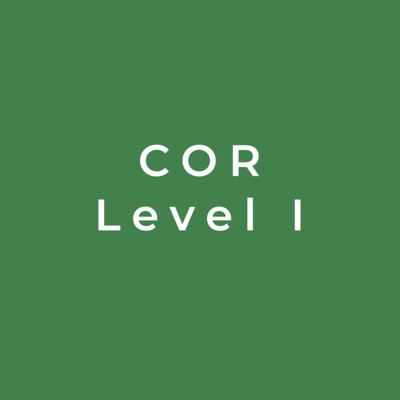Teamwork for Team Members: How to Give the Most to & Get the Most from Your Team
Teamwork for Team Members: How to Give the Most to & Get the Most from Your Team
This 2-day workshop will introduce participants to fundamental tools and techniques for understanding how to effectively build and participate in work teams and to solve team problems. We will focus on the interpersonal team skills that can help supervisors and other team members to more effectively serve and contribute to their teams. This workshop will help equip and empower participants with tools that directly affect a team member’s ability to help move the team to higher levels of performance.
- Use the stages of team or group development to better contribute to team effectiveness
- Use team characteristics and their team member roles to better contribute to team effectiveness
- Give & receive constructive feedback
- Use active listening with team members
- Resolve interpersonal conflicts
- Be able to identify what to look for in team or group dynamics
- Be able to differentiate among different “work styles,” creating a greater appreciation for diversity among team members
- See the individual differences in the way we generate ideas for making decisions and solving problems
- Discuss their own and others’ personal & professional values
- What roles and responsibilities help make an effective team member
- How to help your organization use your valuable qualities as a team member
- How to diagnose the stages within teams
- How to use this information to effectively address team problems
- How to give it
- Personal practice exercise
- How to receive it
- Personal assessments
- Personal practice exercise
- Personal assessment and identification of individual styles
- Overview of 5 traditional styles
- Eight steps towards making conflict constructive using a problem-solving style
- Setting conflict resolution goals – application
- Overview of what to look for in teams
- Exercise for observing/diagnosing effective and ineffective team dynamics
- Personal assessment
- Identify preferred styles
- Understanding others’ and own strengths and weaknesses for each style
- How to get along with someone who has a different style – how to maximize team diversity
- Personal assessment
- Overview of each of the six thinking and problem-solving styles
- Exercise to observe/identify each “Hat” in action
- What to look for
- How to respond someone’s values conflict with your own
Up to 30 students
- Virtual Classes will be a live, Instructor lead class in Zoom for Government, a virtual technical assistant VTA will be available to assist students with any technical issues, take roll, administer evaluations, and distribute certificates of completion. Course materials will be provided electronically.
- Onsite classes will be held at your location. The instructor will travel to you. Materials will be printed and shipped to your site. A sign-up sheet will be provided for student to enter their name (as they want it on their certificate) and the email address to send the certificate to. GSA travel costs will be added to the course fee. Contact us for a travel estimate.
- A minimum of 2 weeks lead time is needed for virtual classes, 3 weeks for onsite classes.
Questions? Contact our training coordinator via email or phone at (202) 843.5447.
Teamwork for Team Members: How to Give the Most to & Get the Most from Your Team
Teamwork for Team Members: How to Give the Most to & Get the Most from Your Team
This 2-day workshop will introduce participants to fundamental tools and techniques for understanding how to effectively build and participate in work teams and to solve team problems. We will focus on the interpersonal team skills that can help supervisors and other team members to more effectively serve and contribute to their teams. This workshop will help equip and empower participants with tools that directly affect a team member’s ability to help move the team to higher levels of performance.
- Use the stages of team or group development to better contribute to team effectiveness
- Use team characteristics and their team member roles to better contribute to team effectiveness
- Give & receive constructive feedback
- Use active listening with team members
- Resolve interpersonal conflicts
- Be able to identify what to look for in team or group dynamics
- Be able to differentiate among different “work styles,” creating a greater appreciation for diversity among team members
- See the individual differences in the way we generate ideas for making decisions and solving problems
- Discuss their own and others’ personal & professional values
- What roles and responsibilities help make an effective team member
- How to help your organization use your valuable qualities as a team member
- How to diagnose the stages within teams
- How to use this information to effectively address team problems
- How to give it
- Personal practice exercise
- How to receive it
- Personal assessments
- Personal practice exercise
- Personal assessment and identification of individual styles
- Overview of 5 traditional styles
- Eight steps towards making conflict constructive using a problem-solving style
- Setting conflict resolution goals – application
- Overview of what to look for in teams
- Exercise for observing/diagnosing effective and ineffective team dynamics
- Personal assessment
- Identify preferred styles
- Understanding others’ and own strengths and weaknesses for each style
- How to get along with someone who has a different style – how to maximize team diversity
- Personal assessment
- Overview of each of the six thinking and problem-solving styles
- Exercise to observe/identify each “Hat” in action
- What to look for
- How to respond someone’s values conflict with your own
Up to 30 students
- Virtual Classes will be a live, Instructor lead class in Zoom for Government, a virtual technical assistant VTA will be available to assist students with any technical issues, take roll, administer evaluations, and distribute certificates of completion. Course materials will be provided electronically.
- Onsite classes will be held at your location. The instructor will travel to you. Materials will be printed and shipped to your site. A sign-up sheet will be provided for student to enter their name (as they want it on their certificate) and the email address to send the certificate to. GSA travel costs will be added to the course fee. Contact us for a travel estimate.
- A minimum of 2 weeks lead time is needed for virtual classes, 3 weeks for onsite classes.
Questions? Contact our training coordinator via email or phone at (202) 843.5447.





